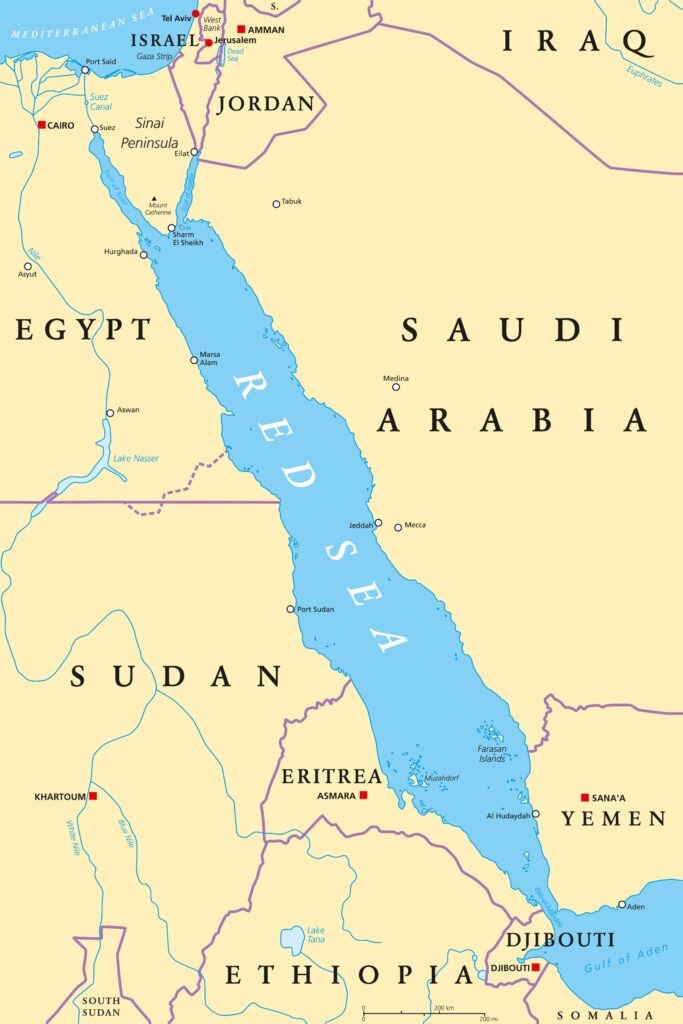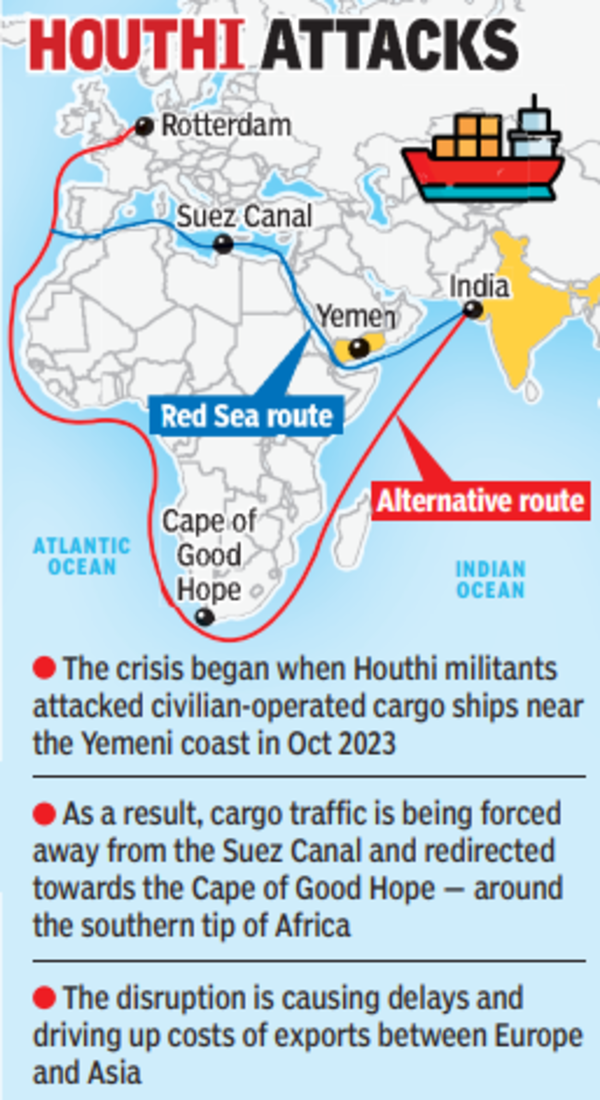Free Courses Sale ends Soon, Get It Now


Free Courses Sale ends Soon, Get It Now



Disclaimer: Copyright infringement not intended.
Context
Global trade faces disruptions due to the Red Sea crisis, impacting Suez Canal routes and Gujarat exports.
Details
Red Sea
Countries bordering the Red Sea include:
Geology
Geography
Living resources
Recent Development
Impact on India

|
PRACTICE QUESTION Sea Bordering country
Which of the pairs given above are correctly matched?
Answer 2 |
© 2024 iasgyan. All right reserved